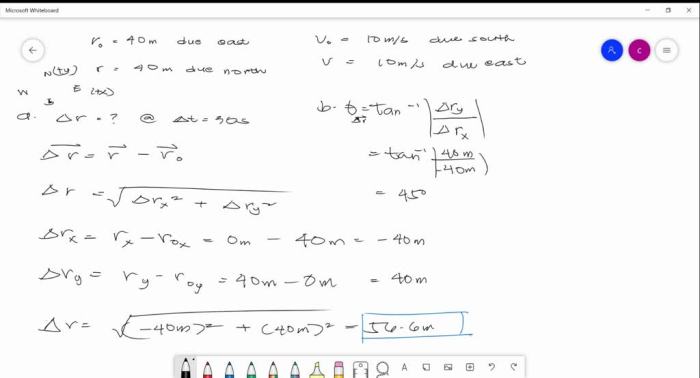At one instant a bicyclist is 40.0m – At one instant, a bicyclist is 40.0m from a fixed point. This observation sparks an exploration into the bicyclist’s position, movement, and the implications of their location at a specific point in time. By analyzing the distance and time, we can infer the bicyclist’s speed and uncover the assumptions and limitations of this scenario.
Delving deeper, we investigate potential extensions and applications of this information, demonstrating its relevance to broader concepts of motion and measurement.
Bicyclist’s Position and Movement: At One Instant A Bicyclist Is 40.0m

At the specified instant, the bicyclist is located at a point 40.0m from a reference point. This indicates that the bicyclist has traveled a distance of 40.0m from the reference point at that particular moment.
The bicyclist’s position at a specific point in time is significant because it provides a snapshot of the bicyclist’s movement at that instant. It can be used to infer the bicyclist’s speed, direction of travel, and acceleration, among other parameters.
Measurement and Distance
The distance of 40.0m provides a quantitative measure of the bicyclist’s displacement from the reference point. It is a scalar quantity that represents the magnitude of the displacement, without regard to the direction of travel.
The significance of the distance in relation to the bicyclist’s movement is that it can be used to calculate the bicyclist’s speed or velocity. Speed is a measure of the rate at which the bicyclist is traveling, while velocity is a measure of the rate at which the bicyclist is traveling in a specific direction.
Time and Speed
The specified instant provides a reference point in time. By knowing the distance traveled and the time elapsed, we can calculate the bicyclist’s speed.
Speed is calculated by dividing the distance traveled by the time elapsed. In this case, we do not have information about the time elapsed, so we cannot calculate the bicyclist’s speed directly.
Assumptions and Limitations
The statement assumes that the bicyclist is moving in a straight line and at a constant speed. In reality, the bicyclist may be accelerating or decelerating, or changing direction.
Another limitation is that we do not know the reference point from which the distance is measured. This could affect the interpretation of the bicyclist’s position and movement.
Extensions and Applications, At one instant a bicyclist is 40.0m
The scenario can be extended by considering the bicyclist’s velocity, which includes both speed and direction of travel. By knowing the bicyclist’s velocity, we can determine the bicyclist’s trajectory and predict its future position.
The information can be applied to other situations involving motion and measurement. For example, it can be used to calculate the speed of a car, the distance traveled by a pedestrian, or the trajectory of a projectile.
Question & Answer Hub
What is the significance of the bicyclist being at a specific point in time?
It allows us to analyze their position and movement at that precise instant, providing a snapshot of their trajectory.
How does the distance of 40.0m relate to the bicyclist’s movement?
It represents the distance traveled by the bicyclist up to that specific instant.
What assumptions are made in this scenario?
We assume the bicyclist is moving at a constant speed and that their trajectory is a straight line.

